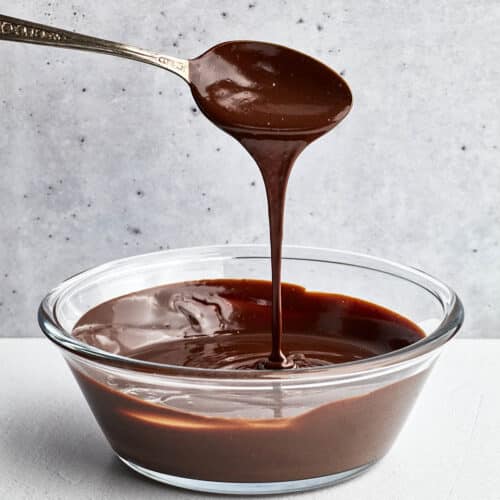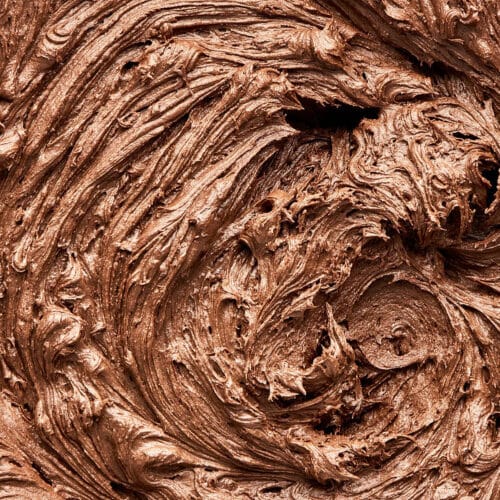With a flakey and tender crust after baking, all butter flaky pie crust is the best-tasting option by far! While there's a place for crisco pie crust, the butter version is just so good and easy to make, too.
Use your homemade pie crust for a sweet summer apricot pie, smooth lemon chess pie, or holiday-ready pumpkin custard pie. Replace store-bought pie shells with this for any recipe you like.

Jump to:
Ingredients
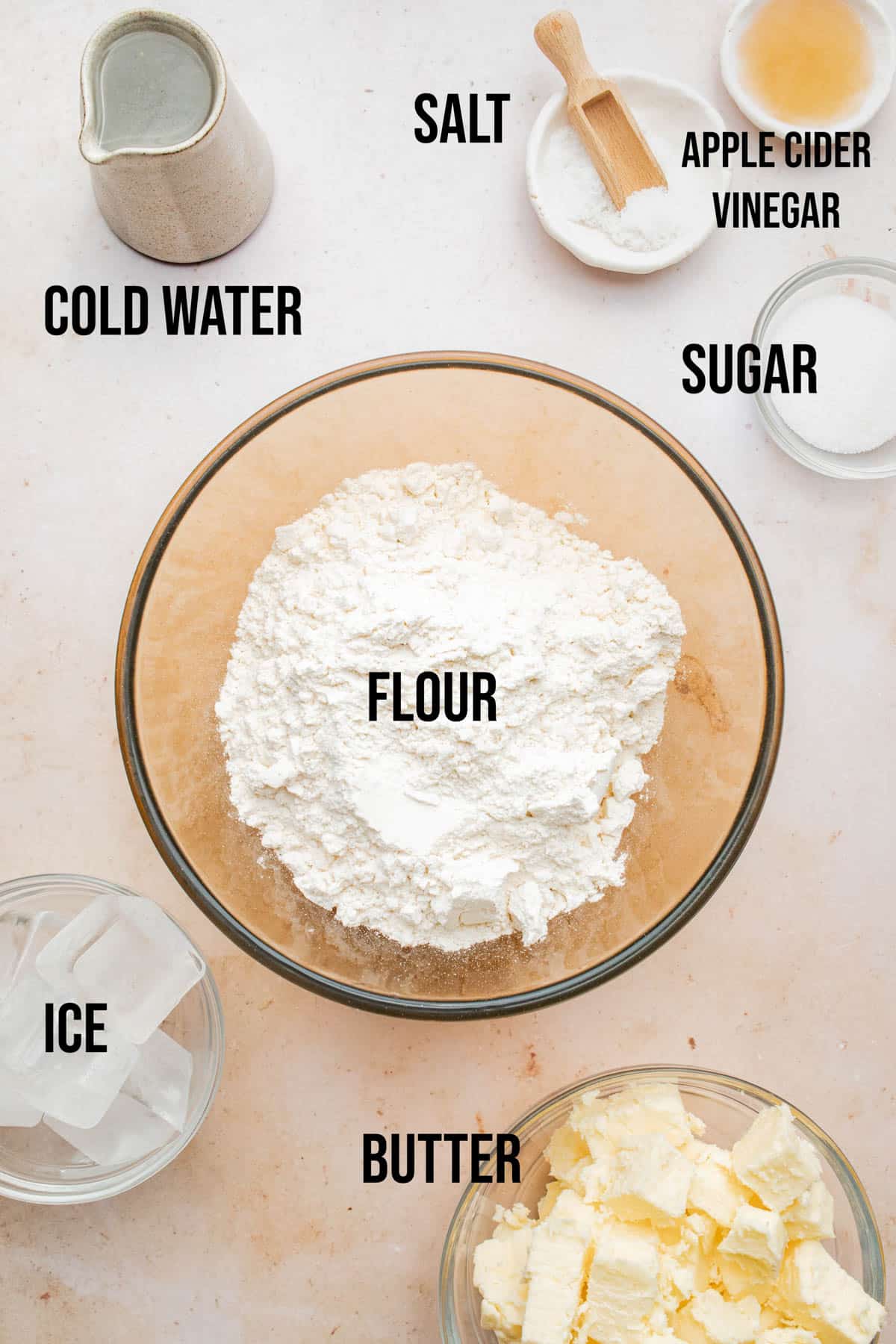
Ingredient Notes and Substitutions
- Flour: use plain white flour or pastry flour for this recipe. Pie crust made with whole wheat flour will be too crumbly.
- Butter: the butter should be very cold, almost frozen if possible. This is what makes the most flaky crust.
- Apple cider vinegar: substitute white vinegar or lemon juice if preferred.
How to Make Pie Crust
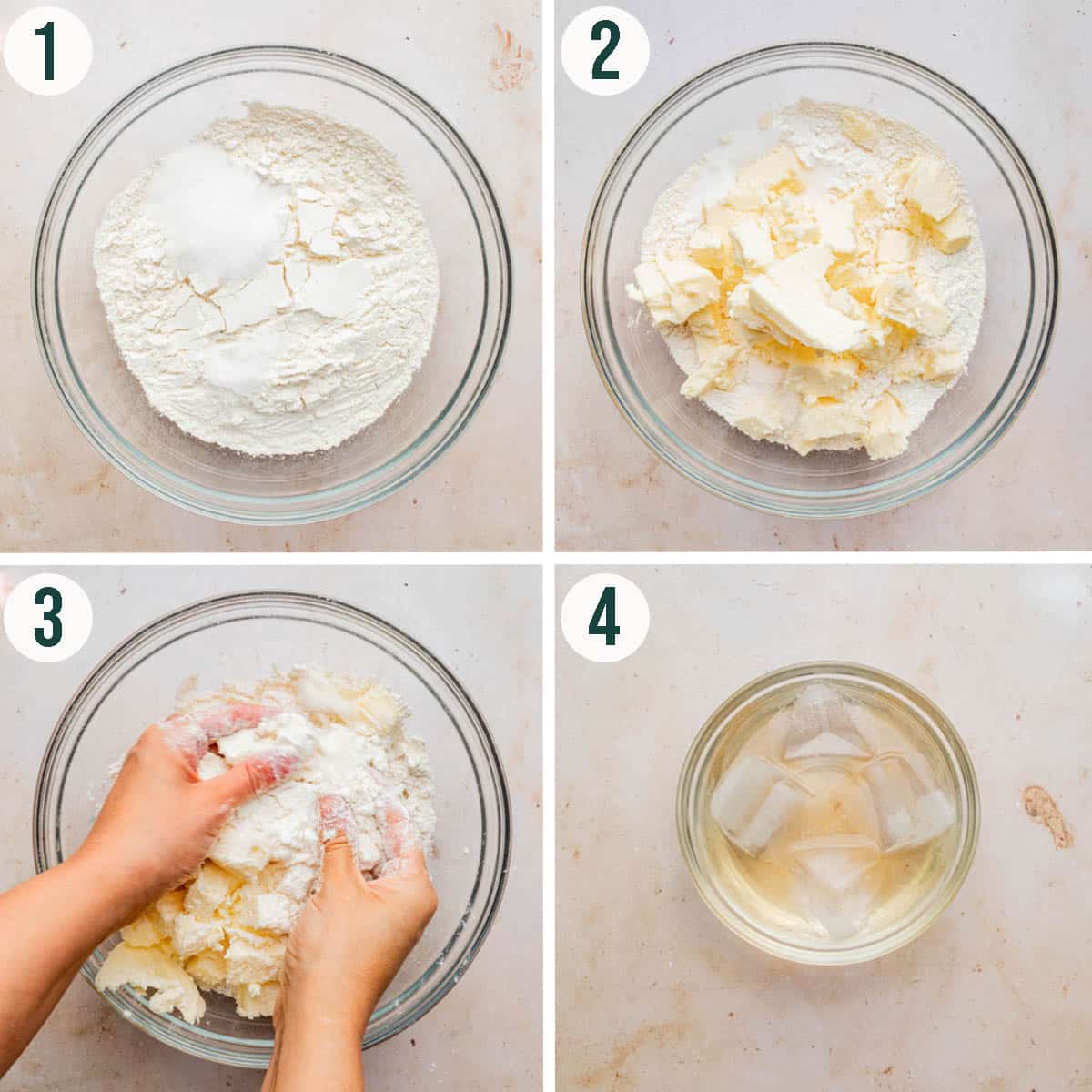
Step 1: mix the dry ingredients in a large bowl.
Step 2: cube the butter and add it to the bowl.
Step 3: use your hands or a pastry cutter to cut the butter into the flour.
Step 4: mix the water, vinegar, and ice.
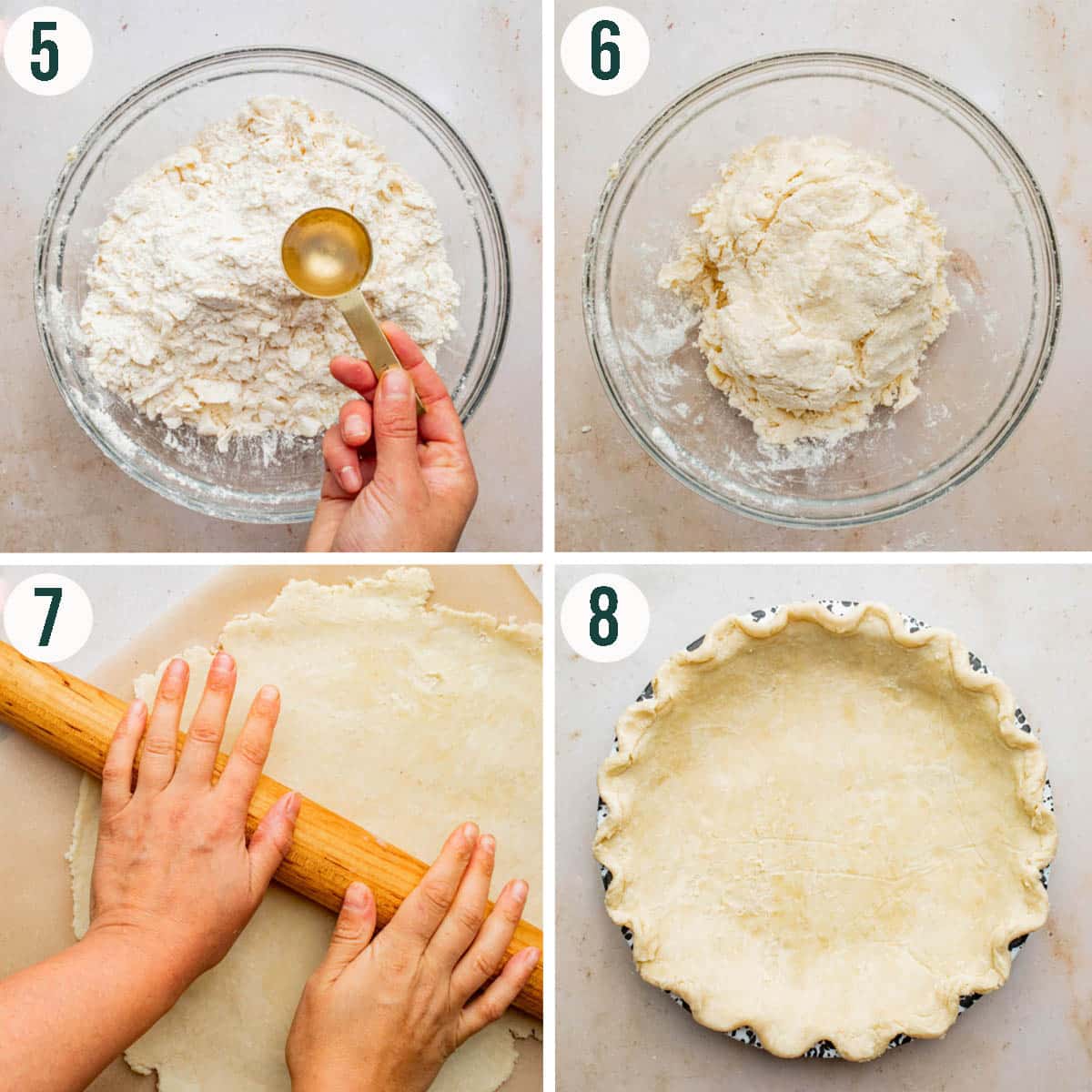
Step 5: add the ice water by spoonfuls, being careful not to add too much.
Step 6: mix the dough until it just comes together when pressed, then chill.
Step 7: roll out the chilled dough with a rolling pin, turning frequently.
Step 8: transfer the dough to a pie tin and fill. Repeat steps 7 and 8 for a double-crust pie.
Top Tips
- Work quickly: you don't want the ingredients to warm up while the dough is being mixed, so work quickly and with light hands to avoid melting.
- Don't over-flour: you don’t want your pie dough picking up any extra flour it doesn’t really need. This is why we roll our dough on lightly floured parchment or waxed paper.
- Add an egg wash: add colour and shine to your crust by brushing any exposed areas of crust with a lightly beaten egg before baking.
Recipe Notes
If the butter pieces are left too large you will need extra water to absorb the dry flour. This can lead to a tough crust and shrinkage in the oven. If the butter pieces are too small, you can end up with a crumbly, rather than flaky, pastry. Try to get it to match the picture in step 5 above.
To make a single-crust pie, you can make the whole batch of dough and simply freeze one half for later. It keeps for several months.
How to Store
Storage: if you want to make it ahead, the pie dough can be refrigerated for up to 4 days, wrapped very well, before rolling and using.
Freezing: unbaked pie dough can be frozen, very well wrapped, for up to three months. Thaw in the fridge overnight before using.
FAQ
What is the secret to a great pie crust?
Keep the ingredients cold, and don't over-work the dough. That's all you really need to know – just follow the recipe for a perfect pie crust! It's really not hard at all.
Why do you put vinegar in a pie crust?
Vinegar is primarily added because it interferes with the creation of gluten strands, so it makes a more tender, light pie crust. Vodka and lemon juice can be used in the same way.
Why do you put milk on a pie crust?
Milk is usually added to help with browning. Cream and sometimes egg wash are used for the same reason. Milk also helps with holding the crust together, especially for more complicated designs like lattices, and helps any toppings like sugar stick.
If you make this Flaky Pie Crust or any other baking basics on the Baked Collective, please take a moment to rate the recipe and leave a comment below. It’s such a help to others who want to try the recipe. For more baking, follow along on Instagram, TikTok, and YouTube.
All-Butter Flaky Pie Crust
Equipment
- Measuring cups and spoons or digital kitchen scale
- 2 Mixing bowls
- Fork or pastry blender
- Plastic wrap
- Parchment or waxed paper
- Rolling Pin
- 9-inch (23-cm) pie plate(s)
Ingredients
- 2 ½ cups all-purpose flour
- 1 tablespoon sugar
- 1 teaspoon sea salt reduce to ½ teaspoon if using salted butter
- 1 ¼ cups very cold unsalted butter cut into ½ inch cubes
- ½ cup cold water
- 1 tablespoon apple cider vinegar
- ½ cup ice cubes
Instructions
- In a large bowl, stir together the flour, sugar, and salt.2 ½ cups all-purpose flour, 1 tablespoon sugar, 1 teaspoon sea salt
- Add the butter pieces to the flour mixture. Working quickly, use your hands to work the butter into the flour. You want the butter pieces to be coarse, like large peas.1 ¼ cups very cold unsalted butter
- In another bowl, combine the cold water, apple cider vinegar, and ice.½ cup cold water, 1 tablespoon apple cider vinegar, ½ cup ice cubes
- Sprinkle two tablespoons of ice water over the flour. Switch to a fork or a pastry blender to mix the water into the flour until fully incorporated.
- Continue to add the ice water, one tablespoon at a time, mixing between each addition. When the dough starts to show signs of coming together, switch to adding teaspoons of water instead of tablespoons. Stop when the dough forms into a loose dough.
- Shape the dough into two flat discs. Wrap the discs in beeswax wrap or plastic wrap and refrigerate them for at least one hour before rolling.
- Place a large piece of parchment or waxed paper on a work surface and sprinkle it lightly with flour. Place a disc of dough on the paper and use a rolling pin to roll the dough to fit the size of a standard 9-inch (23-cm) pie plate, about ⅛-inch (3-mm) thick.
- Once rolled, gently roll the dough around the pin, and off of the paper. Gently unroll the dough over the inside of the pie plate. Use your hands to pick up the edges of the dough, centering it over the pie plate, allowing it to relax into the shape of the plate. Use your fingers to gently press the dough into the sides of, and over the edge of the plate all the way around. Trim the edges of the dough with scissors, leaving about a 1-inch overhang.
To Make A Single Crust Pie
- Fold the trimmed overhang gently under itself to make a neat rounded edge. Crimp the edges however you like and proceed with your chosen recipe.
To Make A Double Crust Pie
- Before rolling under the edge of the first dough, add your chosen pie filling to the pie plate. Roll out the second disc of dough and repeat the process of rolling the dough around the pin to transfer it to the pie plate. Center the top crust, then trim the edges with scissors. Rolling the edges of both crusts under and crimp the edges. Don’t forget to add a few steam holes for venting on the top crust.
Notes
- Unbaked pie dough can be frozen, very well wrapped, for up to three months. Thaw in the fridge overnight before using.
- If you want to make it ahead, the pie dough can be refrigerated, well wrapped, for up to 4 days before rolling and using.

